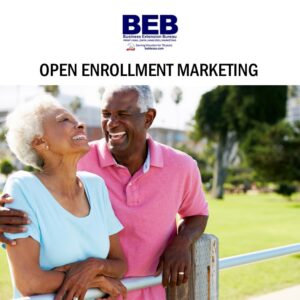 In the healthcare industry, open enrollment is a critical period for health plans to connect with potential members and solidify their position in the market. While digital channels are essential, direct mail marketing remains a powerful and trusted tool to engage with potential members and existing customers, particularly for health insurance providers. Its tangible nature allows for a deeper and more personal connection with audiences, which is crucial when communicating complex healthcare information. By delivering impactful messages directly into the hands of potential policyholders, direct mail empowers them to take their time reviewing and researching options, whether through the mailer itself or by directing them to online resources.
In the healthcare industry, open enrollment is a critical period for health plans to connect with potential members and solidify their position in the market. While digital channels are essential, direct mail marketing remains a powerful and trusted tool to engage with potential members and existing customers, particularly for health insurance providers. Its tangible nature allows for a deeper and more personal connection with audiences, which is crucial when communicating complex healthcare information. By delivering impactful messages directly into the hands of potential policyholders, direct mail empowers them to take their time reviewing and researching options, whether through the mailer itself or by directing them to online resources.
Direct mail offers several key advantages during the busy open enrollment season. It cuts through the digital clutter of email inboxes and social media feeds, giving your message a higher chance of being noticed. Studies show that a large percentage of direct mail is opened and read, leading to higher engagement and response rates compared to digital advertisements. The physical nature of direct mail also builds trust and credibility with consumers, as it’s harder to replicate than digital communications. Furthermore, direct mail allows for highly targeted campaigns, enabling healthcare marketers to personalize messages based on demographics, location, and specific health needs.
To maximize the effectiveness of direct mail during open enrollment, consider incorporating best practices such as personalizing content, using clear and concise messaging, and including strong calls to action. For instance, postcards can be effective for conveying deadlines or announcing events, while letters or brochures can provide more detailed information on plan options. Including interactive elements like QR codes or personalized URLs can further engage recipients and provide valuable data for tracking campaign performance. By strategically leveraging direct mail during open enrollment, health plans can build strong relationships with potential members, educate them about their options, and drive valuable enrollments.
Author Archives: bebtexas
First-Party Data
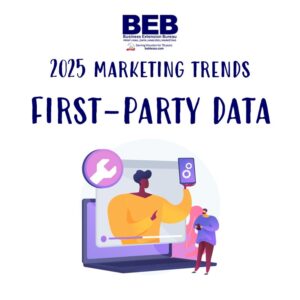 First-party data in marketing refers to information collected directly from your own customers and website visitors. This data is unique to your business and can include details like their demographics, purchase history, website activity, and preferences. It’s considered valuable because it’s highly accurate, relevant to your business, and under your direct control.
First-party data in marketing refers to information collected directly from your own customers and website visitors. This data is unique to your business and can include details like their demographics, purchase history, website activity, and preferences. It’s considered valuable because it’s highly accurate, relevant to your business, and under your direct control.
Using first-party data Allows for more relevant and effective advertising campaigns.
It helps tailor marketing messages and offers to individual customers and improves customer relationships.
VSO-Voice Search Optimization
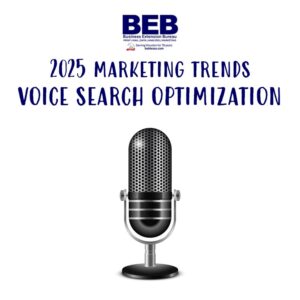
The digital landscape is constantly evolving, and a significant shift is underway with the rising popularity of voice search. No longer a novelty, voice search is becoming an integral part of how users find information and interact with brands online. With devices like smartphones, smart speakers, and virtual assistants becoming commonplace, optimizing for voice search is becoming crucial for businesses aiming to stay competitive and connect with their target audience. By adapting marketing strategies to cater to conversational queries and natural language, businesses can unlock new opportunities to enhance user experience, increase visibility, and drive engagement in this voice-first world.
Voice search optimization (VSO) differs from traditional SEO by focusing on conversational keywords and phrases that mimic how people naturally speak. Instead of targeting short, fragmented keywords, businesses need to optimize for long-tail keywords and question-based queries that reflect common voice search patterns. For example, a user might ask, “Where can I find the best Italian restaurant near me?” instead of typing “best Italian restaurant”. Creating content that directly answers these types of questions and using natural language can improve a business’s chances of appearing in voice search results and gaining a competitive edge.
Furthermore, voice search emphasizes local SEO, as a significant portion of voice searches are location-based. Optimizing for “near me” searches, maintaining accurate Google My Business listings, and incorporating local keywords into content are essential strategies for improving visibility in voice search results. As voice search continues to grow, adapting marketing strategies to incorporate conversational queries, long-tail keywords, and local SEO will be vital for businesses to reach more customers and remain relevant in the evolving digital marketing landscape.
INTERACTIVE CONTENT
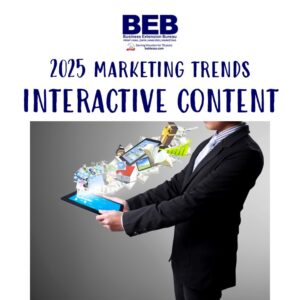 As the digital landscape becomes increasingly crowded, traditional passive content struggles to cut through the noise. This calls for a shift towards experiences that allow consumers to actively participate in the brand narrative, fostering deeper connections and boosting engagement. Think of it as transforming a one-way communication into a captivating, two-way conversation with your audience.
As the digital landscape becomes increasingly crowded, traditional passive content struggles to cut through the noise. This calls for a shift towards experiences that allow consumers to actively participate in the brand narrative, fostering deeper connections and boosting engagement. Think of it as transforming a one-way communication into a captivating, two-way conversation with your audience.
Interactive content offers a multitude of benefits, not only in terms of grabbing attention but also in terms of driving results. By inviting user participation through elements like quizzes, polls, or interactive videos, brands can significantly enhance engagement levels. For instance, interactive videos have been found to achieve substantially higher viewership completion rates and click-through rates compared to static formats, demonstrating their power to keep audiences hooked. This translates into increased time spent on your content and a stronger recall of your brand message.
Ultimately, the embrace of interactive content in 2025 signifies a shift towards delivering meaningful, personalized, and memorable experiences for consumers. Interactive marketing gathers valuable insights into consumer preferences and provide engaging narratives that resonate with customers. By prioritizing interactive elements, brands can move beyond simply disseminating information and instead build vibrant communities, nurture customer loyalty, and stand out in a competitive digital world.
Building Trust and Sustainability in a Conscious World
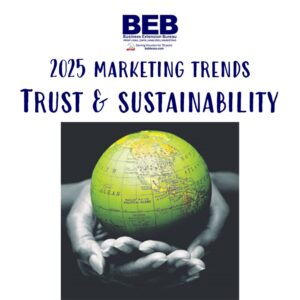 In the dynamic landscape of 2025, marketing is shifting focus towards building genuine connections with consumers. As consumer awareness regarding environmental impact and ethical practices grows, sustainability is no longer a buzzword, but a critical consideration for brands looking to resonate with their audience. Brands that authentically embrace sustainability and prioritize environmental responsibility, through actions like reducing carbon footprints, transparent sourcing, and eco-friendly products, are positioning themselves as industry leaders in a rapidly evolving market.
In the dynamic landscape of 2025, marketing is shifting focus towards building genuine connections with consumers. As consumer awareness regarding environmental impact and ethical practices grows, sustainability is no longer a buzzword, but a critical consideration for brands looking to resonate with their audience. Brands that authentically embrace sustainability and prioritize environmental responsibility, through actions like reducing carbon footprints, transparent sourcing, and eco-friendly products, are positioning themselves as industry leaders in a rapidly evolving market.
Beyond just sustainability, ethical marketing, built on pillars of transparency, fairness, and social responsibility, will be paramount in 2025. Consumers are increasingly discerning and demand brands to align their business practices with their values. By being transparent about sourcing, production, and social impact, engaging in ethical sourcing, and communicating openly about their business practices, brands can build stronger relationships with their audience, fostering greater customer trust and loyalty.
MULTI-CHANNEL MARKETING 2025
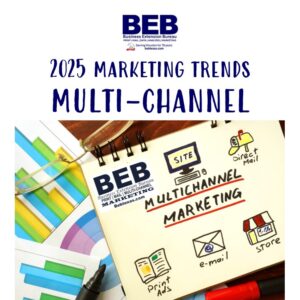 Multi-channel marketing is a significant trend for 2025, evolving to meet the demands of digitally native consumers who expect seamless experiences across all touchpoints. This means integrating online and offline channels, like websites, social media, apps, and direct mail, or physical stores, to provide a cohesive and personalized journey for the customer.
Multi-channel marketing is a significant trend for 2025, evolving to meet the demands of digitally native consumers who expect seamless experiences across all touchpoints. This means integrating online and offline channels, like websites, social media, apps, and direct mail, or physical stores, to provide a cohesive and personalized journey for the customer.
Consumers are accustomed to interacting with brands across multiple channels. They expect a consistent experience regardless of whether they are reading a direct mail postcard, browsing online, visiting a store, or interacting with a brand on social media.
Omnichannel strategies improve customer satisfaction and loyalty by providing a seamless, convenient, and personalized experience, encouraging repeat business.
Multi-channel marketing is not just a trend for 2025, but a fundamental shift in how businesses engage with their customers, prioritizing a seamless, personalized, and consistent experience across all touchpoints.
USER GENERATED CONTENT (UGC)
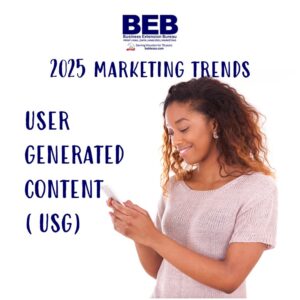 User-generated content (UGC) offers significant advantages for brands by leveraging the authenticity, brand awareness, and engagement potential of content created by their customers. Consumers increasingly trust UGC over traditional advertising due to its perceived authenticity and social proof, making it a powerful tool for building brand trust and credibility. Furthermore, UGC campaigns can significantly boost brand awareness and engagement by fostering a sense of community and encouraging customer advocacy.
User-generated content (UGC) offers significant advantages for brands by leveraging the authenticity, brand awareness, and engagement potential of content created by their customers. Consumers increasingly trust UGC over traditional advertising due to its perceived authenticity and social proof, making it a powerful tool for building brand trust and credibility. Furthermore, UGC campaigns can significantly boost brand awareness and engagement by fostering a sense of community and encouraging customer advocacy.
Authenticity and Trust:
UGC is inherently authentic because it’s created by real users, not brands. This resonates with consumers who are often skeptical of polished advertising and prefer genuine recommendations from their peers. Studies show that consumers trust UGC more than brand-created content, with some reporting that it’s 9.8 times more impactful than influencer content when making purchasing decisions.
Enhanced Brand Awareness:
UGC campaigns can significantly increase brand visibility by reaching a wider audience through customer networks and social media platforms. Encouraging customers to share their experiences with a brand, UGC campaigns can create a buzz and generate organic exposure for the brand. Also, when customers share content about a brand, it often reaches their followers, friends, and family, extending the brand’s reach beyond its own marketing efforts.
Increased Engagement:
By participating in UGC campaigns, customers feel more connected to the brand and are more likely to engage with its content and offerings. The engagement can lead to increased brand loyalty and advocacy, as customers become active participants in the brand’s narrative.
UGC is a powerful marketing tool that allows brands to leverage the authenticity, reach, and engagement of their customer base. By embracing UGC, brands can build trust, enhance brand awareness, and foster a strong sense of community around their products and services.
Cultivating Connection: The Pitfalls of Immediate Donation Requests
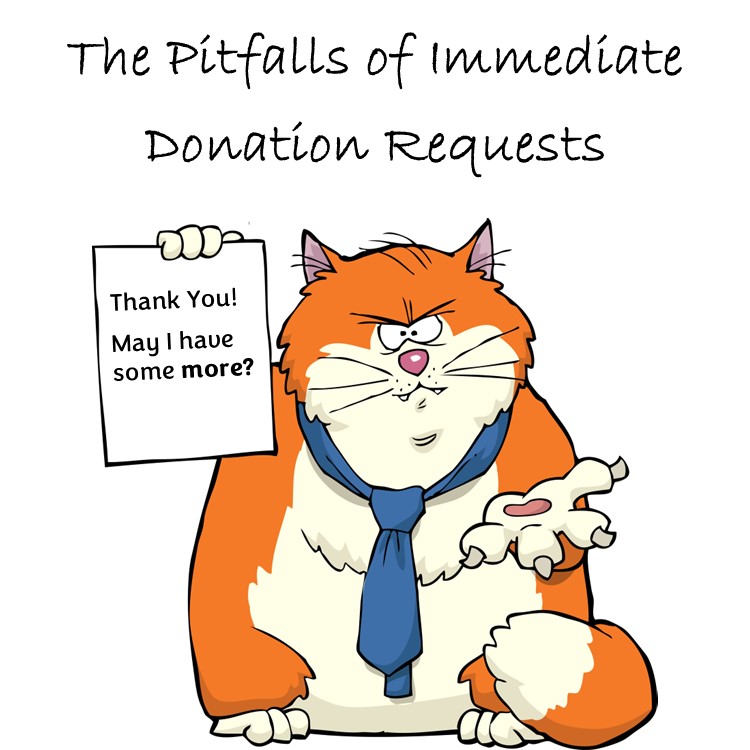 Charitable giving often stems from a desire to make a tangible difference. As the giving season approaches, many people support causes they believe in. Nonprofits with high donor retention rates are more sustainable and better able to weather setbacks. However, requesting an additional donation immediately after a gift is received can be counterproductive to fostering a trusting and appreciative relationship with donors.
Charitable giving often stems from a desire to make a tangible difference. As the giving season approaches, many people support causes they believe in. Nonprofits with high donor retention rates are more sustainable and better able to weather setbacks. However, requesting an additional donation immediately after a gift is received can be counterproductive to fostering a trusting and appreciative relationship with donors.
Some fundraising strategies, while well-intentioned, can inadvertently alienate donors rather than strengthen relationships. Immediately following a donation with another request can create a sense of being undervalued or simply being a source of revenue. Donor retention-focused engagement should begin from the moment a supporter makes their first donation. A prompt and personalized thank you that demonstrates the impact of a gift is essential for cultivating lasting relationships.
Prioritizing sincere gratitude and transparent reporting on the impact of the initial donation should be the immediate next step. Donors want to know how their contributions are being utilized and the positive changes they are making possible. Focusing communication on impact helps donors understand how their contributions are making a difference. Regular updates that showcase progress and success stories demonstrate appreciation and foster a sense of connection, which are crucial for building long-term donor loyalty.
The goal of donor engagement is to build a community of committed supporters who feel valued and invested in the organization’s mission. While soliciting donations is important, the timing and messaging of these requests should reflect a genuine understanding of donor psychology and respect for their initial act of generosity. By focusing on cultivating meaningful relationships built on appreciation, transparency, and shared impact, nonprofits can create a stronger foundation for sustainable fundraising and inspire deeper engagement in the long run.
Social Commerce
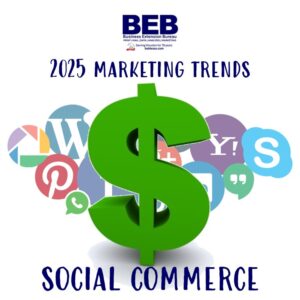 Social commerce such as integrated shopping capabilities, hyper-targeted advertising, and live shopping events continue to gain popularity and will continue to shape the social commerce landscape.
Social commerce such as integrated shopping capabilities, hyper-targeted advertising, and live shopping events continue to gain popularity and will continue to shape the social commerce landscape.
Social commerce is already a significant force, blurring the lines between social media and e-commerce. Platforms like Instagram and TikTok have integrated shopping features, allowing users to discover and purchase products without leaving the app. This seamless integration is driving growth in social commerce sales, with projections estimating the US market to exceed $100 billion by 2025. The in-app checkout functionality, like Instagram Checkout, reduces friction in the buying process, which is a key driver of higher conversion rates.
AI-driven personalization and sophisticated algorithms are already playing a significant role in social commerce. These technologies analyze user behavior and preferences to deliver highly personalized shopping recommendations and tailored marketing strategies. eMarketer’s forecast predicts that 17.9% of US adults’ digital media time will be spent on social platforms in 2025, highlighting the massive audience available for targeted advertising efforts.
Live shopping is already a prominent and effective feature within social commerce. Platforms like TikTok and Instagram host live shopping events, enabling brands to showcase products, interact with viewers in real-time, and offer exclusive deals. This interactive format creates a sense of urgency and community, leading to higher engagement and driving impulse buys. Live shopping not only increases sales but also allows for direct customer engagement and real-time feedback.
AI-DRIVEN MARKETING
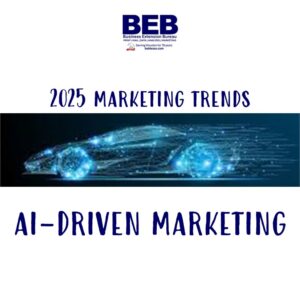 AI-driven marketing is transforming the field by leveraging personalization, automation, and predictive analytics. AI analyzes user data to tailor messages, automates tasks to boost efficiency, and predicts consumer behavior to inform strategies. This allows marketers to focus on strategy and creativity while maximizing the impact of their campaigns.
AI-driven marketing is transforming the field by leveraging personalization, automation, and predictive analytics. AI analyzes user data to tailor messages, automates tasks to boost efficiency, and predicts consumer behavior to inform strategies. This allows marketers to focus on strategy and creativity while maximizing the impact of their campaigns.
Key Components:
Personalization:
AI analyzes vast amounts of customer data to create highly personalized marketing experiences. This includes personalized content, product recommendations, and targeted advertising, leading to increased engagement and conversions.
Efficiency:
AI-powered automation streamlines tasks like content creation, ad optimization, and customer service, freeing up marketers to focus on strategic planning and creative execution.
Predictive Analytics:
AI algorithms analyze historical and real-time data to forecast consumer behavior and trends. This allows marketers to anticipate customer needs, optimize campaigns, and make data-driven decisions.
Benefits of AI in Marketing:
Improved Targeting:
AI enables more precise customer segmentation and targeting, ensuring that the right message reaches the right audience.
Increased Engagement:
Personalized content and tailored experiences lead to higher engagement rates and stronger customer relationships.
Enhanced ROI:
By optimizing campaigns, automating tasks, and improving targeting, AI helps businesses maximize their marketing ROI.
Better Decision Making:
Predictive analytics provides valuable insights that enable marketers to make more informed and effective decisions.
